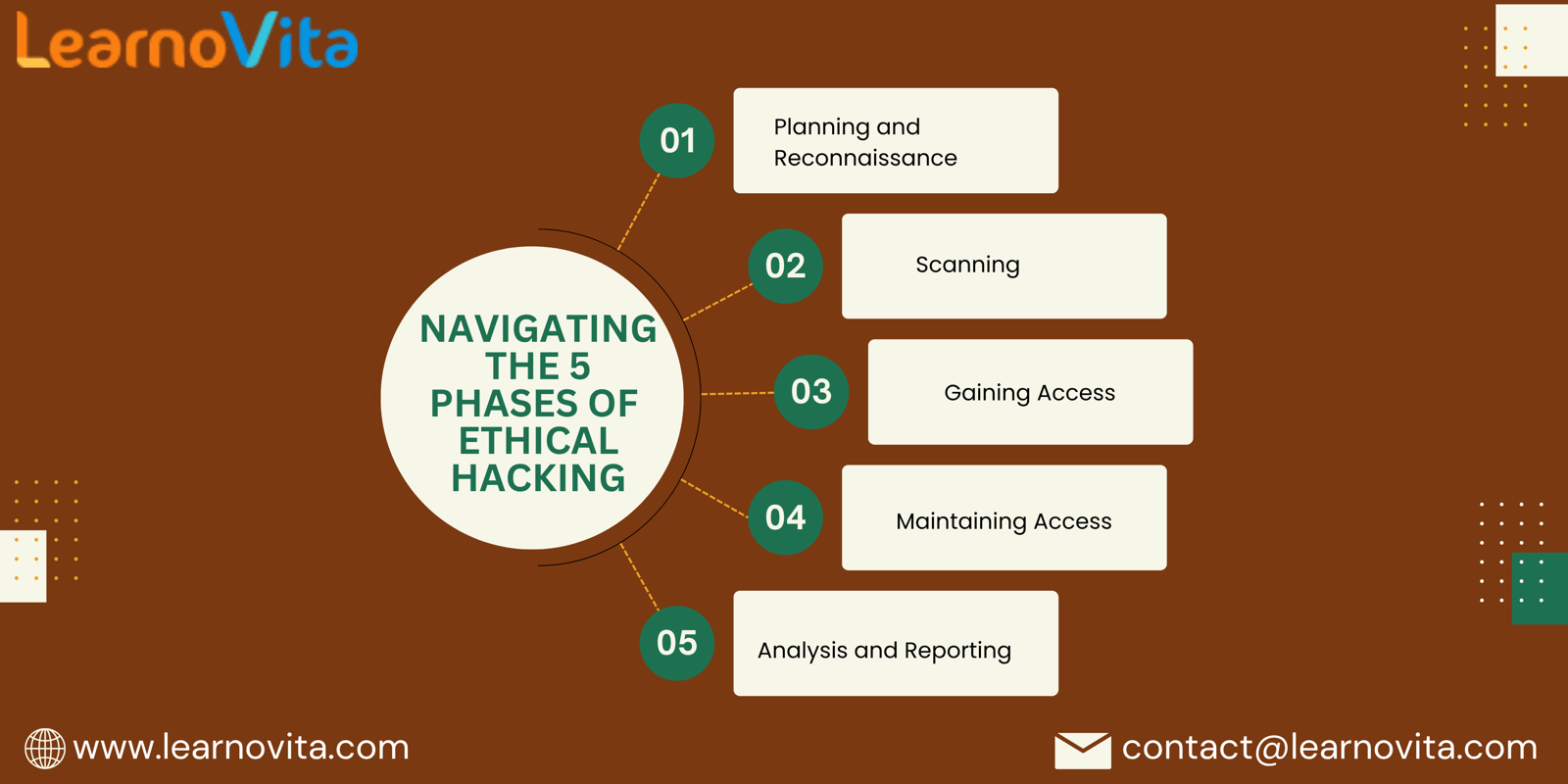Ethical hacking, also known as penetration testing or white-hat hacking, is a crucial practice in cybersecurity. It involves simulating cyber-attacks to identify vulnerabilities in systems and networks. Understanding the stages of ethical hacking can help organizations bolster their security posture. Here’s a breakdown of the five essential stages.
If you want to excel in this career path, then it is recommended that you upgrade your skills and knowledge regularly with the latest Ethical Hacking Course in Bangalore.

1. Planning and Reconnaissance
The first stage involves gathering as much information as possible about the target. This process is known as reconnaissance and can be divided into two types:
Passive Reconnaissance: Collecting information without direct interaction with the target, such as using publicly available data.
Active Reconnaissance: Interacting with the target's systems to gather information, which can include pinging IP addresses or using network scanning tools.
The goal is to create a comprehensive map of the target's network and identify potential entry points.
2. Scanning
Once the reconnaissance phase is complete, ethical hackers move to scanning. This stage involves using various tools to identify live hosts, open ports, and services running on those ports. The main techniques employed include:
Network Scanning: Identifying active devices on the network.
Port Scanning: Checking for open ports and services.
Vulnerability Scanning: Using automated tools to find known vulnerabilities in systems.
This stage helps hackers understand the target’s structure and potential weaknesses.
3. Gaining Access
With a clear understanding of the target's vulnerabilities, ethical hackers then attempt to exploit these weaknesses to gain unauthorized access. This phase can involve:
Exploiting Vulnerabilities: Using known exploits to gain access.
Social Engineering: Manipulating individuals into divulging confidential information.
The objective is to demonstrate how an attacker could gain access to sensitive data or systems.
With the aid of Ethical Hacking Online Training programs, which offer comprehensive training and job placement support to anyone looking to develop their talents, it’s easier to learn this tool and advance your career.

4. Maintaining Access
After gaining access, ethical hackers focus on maintaining that access to understand how long an attacker could remain undetected. This can involve:
Creating Backdoors: Installing tools that allow continued access.
Privilege Escalation: Gaining higher levels of access within the system.
This stage highlights the potential risks of undetected breaches.
5. Analysis and Reporting
The final stage involves compiling the findings into a comprehensive report. This report typically includes:
Summary of Findings: A detailed overview of vulnerabilities identified.
Recommendations: Suggested fixes or improvements to enhance security.
Risk Assessment: An analysis of the potential impact of the vulnerabilities.
This stage is critical for organizations to understand their security posture and implement necessary changes.
Conclusion
Ethical hacking plays a vital role in modern cybersecurity. By following these five stages—planning and reconnaissance, scanning, gaining access, maintaining access, and analysis and reporting—ethical hackers can effectively identify and mitigate vulnerabilities, ultimately protecting sensitive information from malicious attacks. Embracing ethical hacking as part of a robust security strategy is essential for any organization in today’s digital landscape.


Write a comment ...